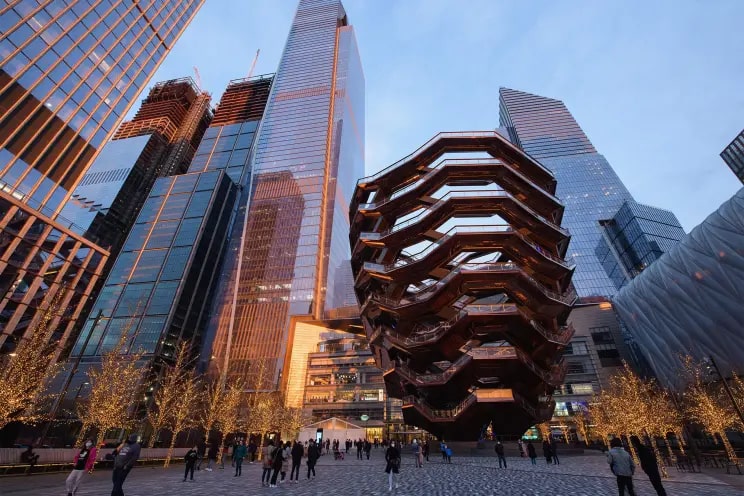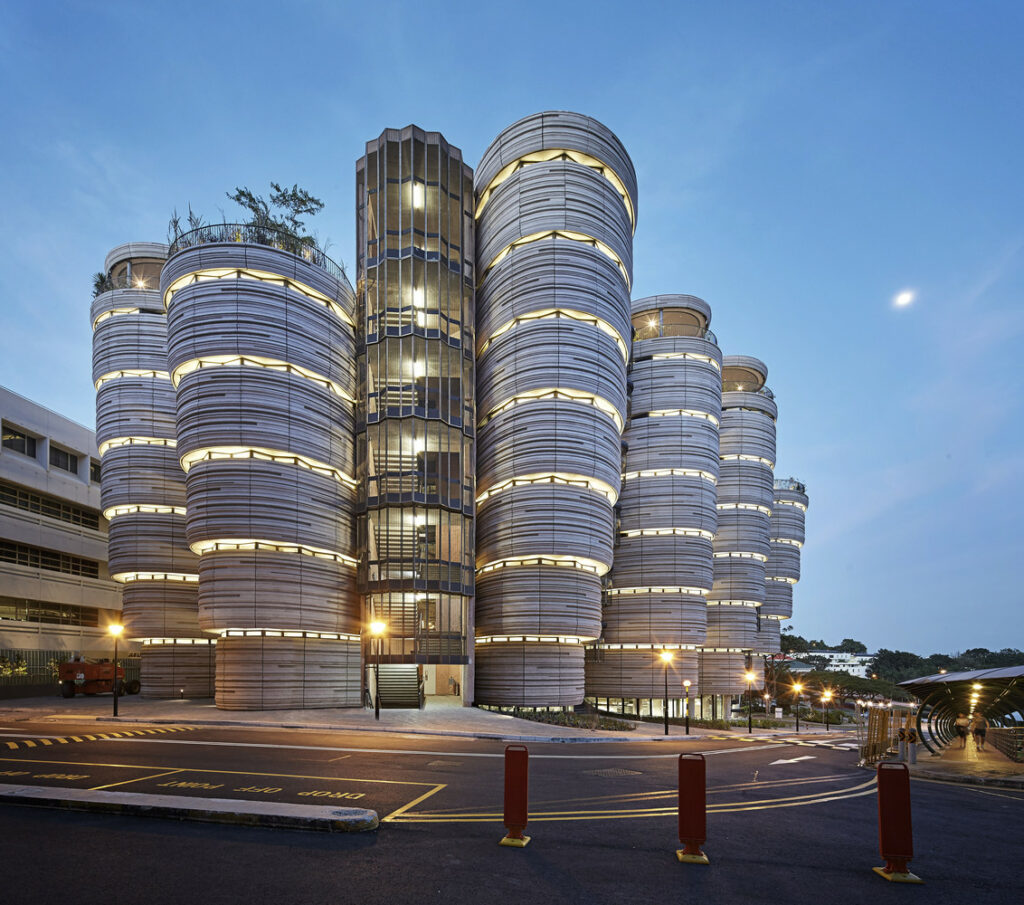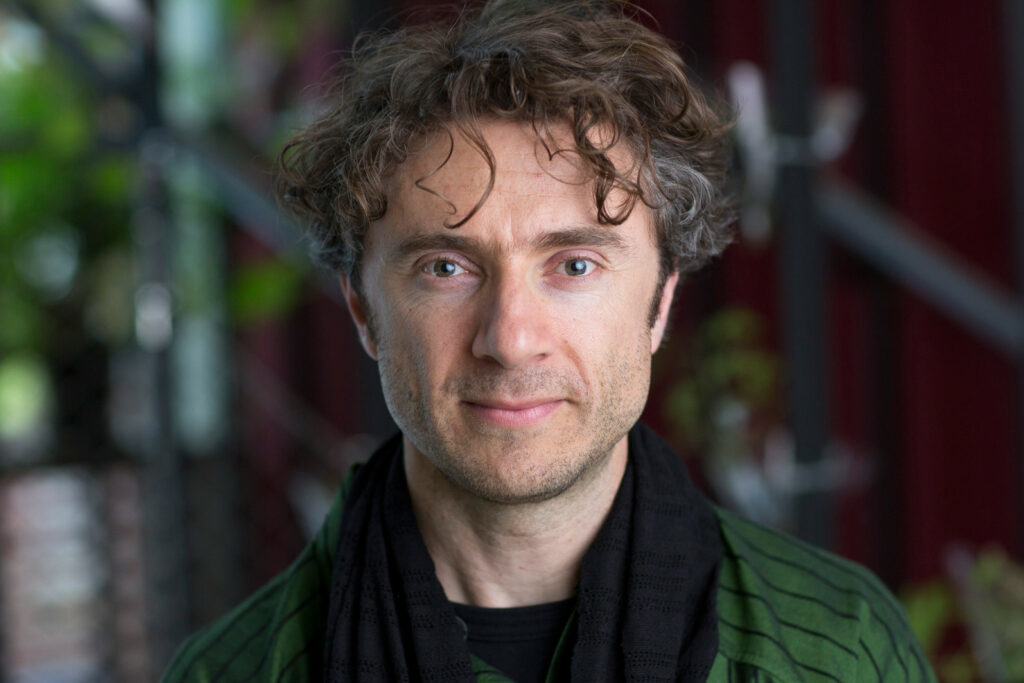



A 2-day immersion into the future of sustainable construction
Thomas Heatherwick: An Introduction
Thomas Heatherwick is a name that resonates with innovation and audacity in the modern design and architecture landscape. Known for his distinct approach that blurs the lines between architecture, design, and art, Heatherwick has carved out a niche that challenges the conventional parameters of urban space aesthetics. His projects, ranging from spectacular buildings to striking pieces of infrastructure, not only capture the eye but also invite interaction, making them landmarks in their own right.
Thomas Heatherwick Early Life and Education
The Formative Years: A Foundation in Creativity
Born in 1970 in London, Heatherwick showed an early propensity for design. His curiosity was not confined to the traditional; it was an explorative journey through the tactile and the structural. From crafting objects out of wood in his grandfather’s workshop to experimenting with unconventional materials, his childhood was a playground of creativity.
Academic Pursuits: From Manchester to the Royal College of Art
| Institution | Degree | Focus Area |
|---|---|---|
| Manchester Polytechnic | BA in Three Dimensional Design | Sculpture, Industrial Design |
| Royal College of Art | MA in Furniture and Product Design | Innovation in Materials |
At Manchester Polytechnic, Heatherwick was not just a student but a pioneer, often pushing the boundaries of his assignments to incorporate complex ideas and materials. His academic journey culminated with a master’s degree from the Royal College of Art in London, where he further honed his skills under the guidance of prominent designers and where his visionary approach began to take shape.
The Launch of Heatherwick Studio
In 1994, fresh from the academic world, Heatherwick founded Heatherwick Studio. It started as a small entity focused on design and architecture but quickly grew into a powerhouse, tackling everything from large-scale public installations to monumental architecture. The studio became a laboratory for Heatherwick’s experimental designs, each project a testament to his ethos: that design should provoke a response and serve a purpose beyond mere functionality.
This dual focus on practicality and marvel has defined Heatherwick’s career, setting the stage for a series of projects that would redefine public spaces and challenge architectural norms worldwide.
Philosophy of Design
Thomas Heatherwick’s approach to design transcends traditional boundaries. His philosophy is deeply rooted in the principle of making the ordinary extraordinary, transforming mundane spaces into vibrant hubs of activity and interaction. Heatherwick often speaks of the “human experience” in architecture, emphasizing that each structure should not only serve a functional purpose but also engage the emotional responses of its users.
Detailed Exploration of Major Works
Thomas Heatherwick’s portfolio is not just vast but varied, illustrating his versatility across different types of spaces and scales. Here we dive deeper into some of his standout projects, examining the unique aspects and the innovative approaches that set them apart.
The Vessel at Hudson Yards


Design and Concept
The Vessel is an intricate network of staircases that rise above Hudson Yards in New York City. Designed as the centerpiece of this new development, its lattice-like structure is made up of 154 interconnected flights of stairs. The design invites visitors to explore the vertical landscape, offering new perspectives of the city from different heights and angles.
Public Interaction and Reception
Since its opening, The Vessel has become a popular public landmark, celebrated for its interactive nature and photogenic qualities. It is a physical manifestation of Heatherwick’s philosophy of engaging architecture, although it has also faced criticism concerning accessibility and its public cost.
The Learning Hub at Nanyang Technological University


Architectural Approach
The Learning Hub challenges traditional educational environments with its innovative design that promotes connectivity and interaction. Its circular towers are interconnected, eliminating corridors and creating open communal spaces that encourage spontaneous discussions and exchanges.
Impact on Educational Design
This project has been heralded for its forward-thinking approach to educational spaces, influencing how architects and educators think about the design and use of such environments. It underscores the importance of architecture in shaping educational experiences and outcomes.
Thomas Heatherwick: Design Techniques and Innovations
Thomas Heatherwick’s work is characterized by a pioneering use of materials and a deep commitment to new methods of fabrication and construction. His approach often leads to groundbreaking structures that are both functional and visually captivating.
Material Innovation
Adaptive Reuse of Materials
Heatherwick often employs materials in unconventional ways, such as the repurposing of historic artifacts or industrial materials that give new life and context to his projects. This not only supports sustainability but also adds a rich historical layer to his contemporary designs.
Experimentation with Form and Texture
The studio’s explorations often lead to new ways of considering form and texture. For example, the use of weathering steel in the East Beach Café project allowed the structure to naturally oxidize, thus protecting itself from environmental elements while blending with the seaside landscape.
Fabrication Techniques
Pushing Boundaries with Technology
Heatherwick’s integration of cutting-edge technology in the fabrication process allows for the realization of complex designs that would be impossible with traditional methods. This innovative approach is evident in how The Vessel was constructed, involving a detailed orchestration of various crafts and technologies.
Thomas Heatherwick: Collaborations and Influences
Thomas Heatherwick’s career is marked not only by his unique designs but also by the influential partnerships and mentors that have shaped his approach to architecture and design. Understanding these relationships provides insight into the broader context of his work.
Key Collaborations that Shaped Heatherwick’s Projects
Partnership with Engineers
Heatherwick’s ambitious projects often require innovative engineering solutions. His ongoing collaboration with renowned engineering firms allows for the realization of his visionary designs, where the technical challenges of his ideas are met with advanced engineering methods.
Collaborations with Artists and Designers
Heatherwick’s work intersects with art and design, leading to collaborations with various artists and designers. These partnerships enhance the interdisciplinary nature of his projects, infusing them with a rich diversity of ideas and perspectives.
Influences on Heatherwick’s Design Philosophy
Influential Mentors
Throughout his education and early career, Heatherwick was mentored by leading figures in design and architecture. These relationships helped mold his approach to design, encouraging a blend of functionality and aesthetic appeal in his projects.
Historical and Cultural Influences
Heatherwick’s designs often reflect a deep appreciation for historical and cultural contexts, drawing inspiration from global architectural traditions and local crafts. This not only enriches his projects but also ensures they resonate well with their environments and communities.
Heatherwick’s Impact on Urban Spaces
Thomas Heatherwick’s architectural interventions are not just structures; they are catalysts for urban transformation. His projects often rejuvenate neglected city areas or redefine the use of space in crowded urban environments.
Enhancing Urban Environments
Revitalization Projects
Many of Heatherwick’s works involve transforming underused or derelict urban areas into vibrant public spaces. His approach to revitalization goes beyond mere cosmetic changes, embedding functionality and community engagement into the very fabric of these spaces.
Creating Landmarks
Heatherwick’s knack for creating iconic structures makes his projects instant landmarks. These landmarks boost local tourism and pride, contributing to the cultural and economic vitality of the areas they inhabit.
Impact on Public Engagement and Interaction
Designing for Public Interaction
Heatherwick’s designs encourage public interaction and engagement. His projects, from bridges to public installations, invite people to interact with the space and with each other, fostering a sense of community and belonging.
Accessibility and Inclusivity
Heatherwick is also mindful of making his designs accessible and inclusive, ensuring that they cater to a wide range of users. This commitment to inclusivity not only makes his spaces more user-friendly but also more integrated into the fabric of urban life.
These sections demonstrate how Heatherwick’s contributions extend beyond the physical designs. His work influences social dynamics and urban development, making cities more livable and engaging for their inhabitants. Each project, while a standalone marvel, also plays a part in the larger narrative of the city’s evolution, showcasing the profound impact of thoughtful and innovative architectural design on urban landscapes.
Criticism and Controversies of Thomas Heatherwick’s Projects
Thomas Heatherwick’s architectural works are recognized worldwide for their creativity and innovation. However, certain projects have sparked debates that highlight the complexities and challenges of executing such groundbreaking designs in the public realm. Here we delve deeper into these criticisms and explore the controversies, particularly focusing on The Vessel and The Garden Bridge Project in London.
The Garden Bridge Project in London
Critique: Financial Viability and Transparency
- Criticism: The Garden Bridge faced intense scrutiny over its funding and financial management. Originally proposed to be funded by private donations, the project’s costs escalated, requiring substantial public funding. Critics argued that the financial plan lacked transparency and that the project was not subject to the rigorous public consultation typically expected for developments using taxpayer money.
- Defense: Supporters claimed that the bridge would provide a beautiful, green public walkway over the River Thames, connecting communities and promoting urban greening. It was seen as a potential tourist attraction that could bring economic benefits similar to the High Line in New York City.
Environmental and Social Impact
- Criticism: Environmental activists were concerned about the impact on the river’s ecosystem and the local area’s landscape. There were also fears about the privatization of public space, as the bridge would need to be closed occasionally for corporate events and maintenance, limiting public access.
- Defense: Advocates of the bridge argued that it would increase biodiversity through its extensive gardens and provide a new green space for Londoners, contributing positively to the city’s environment and offering a serene space for relaxation and social interaction.
Broader Implications
These controversies reflect broader themes in modern architecture and urban development:
- The Role of Public Art and Architecture: Balancing aesthetic innovation with functionality and inclusivity.
- Financial and Environmental Sustainability: Ensuring that projects are financially justifiable and environmentally considerate, particularly when public funds are involved.
- Community and Cultural Sensitivity: Engaging with local communities to ensure that projects enhance rather than disrupt their environments.
These discussions underscore the importance of meticulous planning and community engagement in architecture, ensuring that projects not only achieve artistic or aesthetic goals but also serve the broader public interest sustainably and inclusively.
Thomas Heatherwick: Influence on the Industry
His recognitions also highlight his influence on emerging architects and designers, inspiring them to explore the intersections of functionality, art, and sustainability in their work. Heatherwick’s accolades serve as a testament to his role in shaping contemporary design discourse and his impact on future generations of designers.
These sections underscore the dual nature of Heatherwick’s career: a path marked by both groundbreaking achievements and significant challenges. Through his innovative designs and the debates they spark, Heatherwick remains a pivotal figure in the ongoing dialogue about the role of architecture in society and the environment.
Thomas Heatherwick: Future Projects and Directions
As Thomas Heatherwick continues to innovate and push the boundaries of design, his studio is involved in several upcoming projects that promise to further influence the fields of architecture and urban planning. This section looks ahead to what we can expect from Heatherwick Studio in the coming years.
Personal Insights from Thomas Heatherwick


Gaining insights directly from Thomas Heatherwick provides a deeper understanding of his vision and the philosophies that drive his creative processes. This section explores his thoughts on design, architecture, and the future of urban spaces through interviews and personal essays.
Thomas Heatherwick on Design and Creativity
Philosophy and Approach
In various interviews, Heatherwick has discussed how his approach to design is not merely about aesthetics but about solving problems in innovative ways. He emphasizes the importance of creativity in responding to modern challenges and how design can significantly impact people’s lives.
Thomas Heatherwick: Future Vision for Architecture
Heatherwick’s Predictions and Hopes
Looking forward, Heatherwick shares his vision for the future of architecture, focusing on how buildings can be more than just structures. He envisions them as living systems that interact with their environments and adapt to the changing needs of their inhabitants.
Thomas Heatherwick and the Importance of Integrating Nature into Urban Environments
Heatherwick frequently highlights the necessity of integrating nature into urban planning. He believes that future architectural projects should embrace green spaces and sustainable practices to create healthier living environments for urban populations.
This section not only gives a glimpse into the future projects and directions of Heatherwick Studio but also provides personal reflections from Heatherwick himself, offering an intimate look at the motivations and aspirations that guide his impactful work.
Conclusion
Thomas Heatherwick’s impact on the world of design and architecture is profound and multifaceted. From his innovative approach to architectural projects that transform urban landscapes to his contributions to education and public engagement, Heatherwick has established himself as a visionary whose work transcends conventional boundaries. His projects not only challenge architectural norms but also encourage a deeper connection between people and the spaces they inhabit. As Heatherwick Studio continues to explore new possibilities and push the limits of design, Thomas Heatherwick remains a pivotal figure in shaping the future of architecture and design. His legacy is one of creativity, commitment to sustainability, and an unyielding passion for solving modern challenges through design. As we look forward to his future endeavors, the architectural community and the broader public alike anticipate with excitement the next chapters in his remarkable career.
If you want o learn about our consultancies in Portuguese language, click here.






A 2-day immersion into the future of sustainable construction